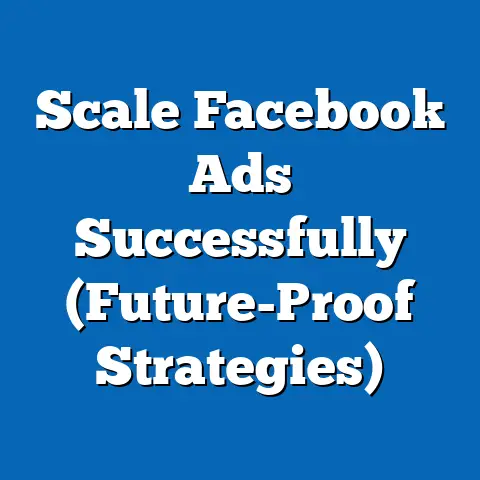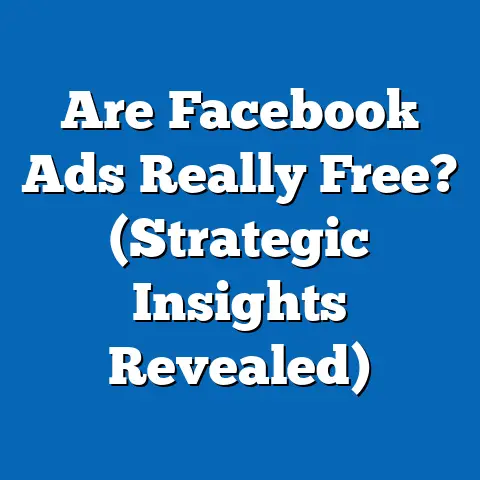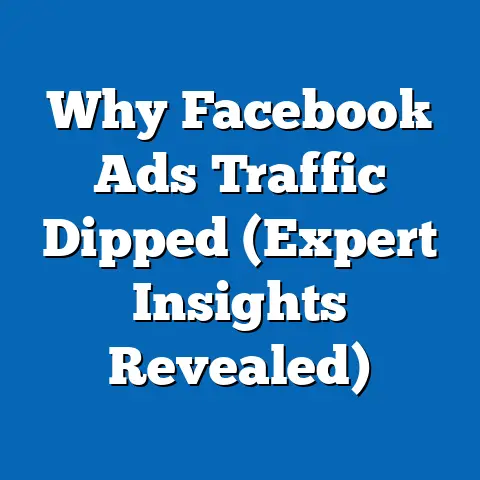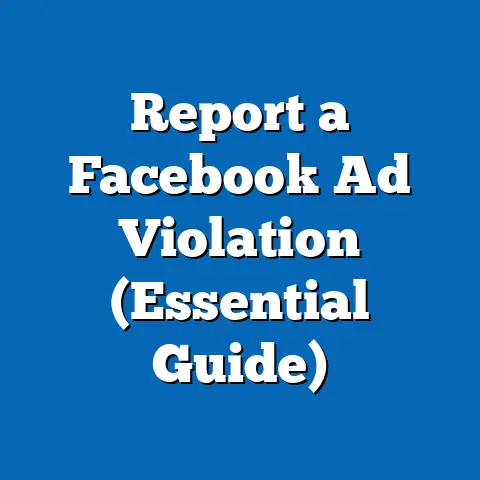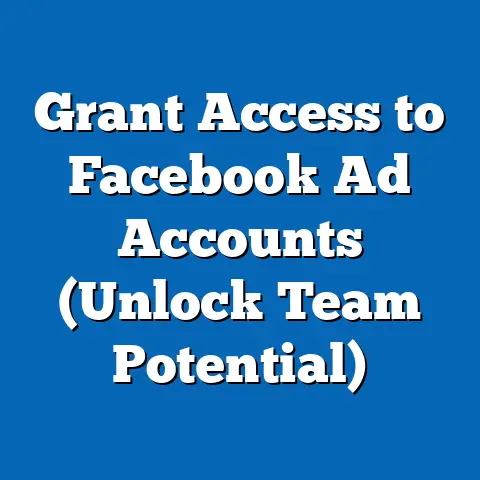Transform Facebook Push Ads for Maximum Impact (Pro Tips)
Flooring, often relegated to the background, is truly an art form. Think about it: the texture, the color, the pattern – it all contributes to the overall feel of a room. A carefully chosen hardwood floor can exude warmth and sophistication, while a vibrant tile design can inject personality and energy into a space. Just like a painter carefully selects their colors and brushstrokes, an interior designer considers flooring as a crucial element in their artistic vision. It’s more than just something to walk on; it’s a canvas upon which the entire room is built.
And just like the artistry involved in selecting the perfect flooring, crafting effective Facebook ads requires a similar level of creativity and strategic thinking. We’re not just throwing images and words together; we’re sculpting a message that resonates with our audience, captures their attention, and ultimately drives them to take action. In this guide, I’m going to share my secrets to transforming your Facebook push ads from bland and forgettable into powerful, conversion-driving masterpieces. Let’s dive in and unlock the full potential of Facebook advertising!
Understanding Facebook Push Ads
Facebook is a sprawling digital landscape, filled with various ad formats vying for user attention. So, what exactly are Facebook Push Ads, and how do they differ from the rest of the pack?
Essentially, “Facebook Push Ads” isn’t a specific ad type officially recognized by Facebook. It’s more of a colloquial term used to describe ads that are designed to be highly engaging and attention-grabbing, pushing users towards a specific action. These ads are proactive, aiming to interrupt the user’s scrolling and entice them to click, watch, or learn more.
Think of them as the digital equivalent of a perfectly placed product display in a store, or a captivating billboard that makes you stop and take notice. They’re designed to “push” your message to the forefront of your target audience’s attention.
Here’s a breakdown of the key characteristics:
- Visual Appeal: Push ads heavily rely on compelling visuals – high-quality images, engaging videos, and eye-catching graphics – to capture attention.
- Concise Messaging: They deliver a clear and concise message, quickly conveying the value proposition.
- Strong Call-to-Action: They feature a prominent and persuasive call-to-action (CTA) that encourages immediate action.
- Targeted Delivery: They are strategically targeted to reach the most relevant audience segments.
How They Differ From Other Ad Formats:
While all Facebook ads aim to reach an audience, push ads emphasize proactive engagement. They’re not just passively displayed; they’re designed to actively interrupt and entice. Here’s how they stack up against other common formats:
- Image Ads: Push ads often incorporate powerful imagery, but they go beyond just a static image. They use visuals strategically to draw attention and convey a message.
- Video Ads: Video ads are inherently engaging, and push ads often utilize short, impactful videos to capture attention and drive action.
- Carousel Ads: Carousel ads allow for showcasing multiple products or features, but push ads can be even more focused, driving attention to a single, compelling offer.
- Lead Ads: Lead ads are designed to collect leads directly on Facebook. Push ads can be used to drive traffic to lead ads, increasing their visibility and effectiveness.
The Mechanics of Facebook Push Ads:
Understanding how these ads work is crucial for maximizing their impact. Here’s a look at the key mechanics:
- Targeting Options: Facebook offers a vast array of targeting options, allowing you to reach specific demographics, interests, behaviors, and even custom audiences based on your existing customer data.
- Ad Placements: You can choose where your ads appear on Facebook, including the news feed, right column, Instagram, and Audience Network. Selecting the right placement is critical for reaching your target audience.
- User Engagement Metrics: Facebook provides detailed analytics on ad performance, including impressions, reach, clicks, click-through rate (CTR), conversion rate, and cost per acquisition (CPA). Monitoring these metrics is essential for optimizing your campaigns.
Understanding Audience Behavior:
Ultimately, the success of your Facebook Push Ads hinges on understanding your audience. What are their interests? What motivates them? What problems are they trying to solve?
By deeply understanding your audience’s behavior and preferences, you can create ads that resonate with them on a personal level, capturing their attention and driving them to take action.
My Takeaway: Facebook Push Ads are all about proactive engagement. They’re designed to cut through the noise and grab your audience’s attention. Understanding the mechanics of how these ads work, along with your audience’s behavior, is the first step towards creating high-impact campaigns.
Next Steps: Start by defining your target audience. What are their demographics, interests, and behaviors? The more you know about your audience, the better equipped you’ll be to craft compelling ads that resonate with them.
Crafting Compelling Ad Content
Now that we understand what Facebook Push Ads are and how they work, let’s dive into the heart of the matter: crafting compelling ad content. This is where the artistry truly comes into play.
The Power of Visuals:
In the fast-paced world of social media, visuals are king. Your ad has mere seconds to capture attention and make an impression. That’s why high-quality visuals are absolutely essential.
- Choose the Right Images: Select images that are relevant to your product or service and that resonate with your target audience. Use high-resolution images that are visually appealing and free from distractions.
- Engaging Videos: Videos are incredibly powerful for capturing attention and conveying a message. Keep your videos short, engaging, and focused on delivering value.
- Eye-Catching Graphics: Use graphics to highlight key benefits, showcase testimonials, or create a sense of urgency. Ensure your graphics are visually appealing and consistent with your brand.
Pro Tip: Invest in professional photography or videography. High-quality visuals can make a world of difference in the performance of your ads.
The Art of Powerful Ad Copy:
While visuals are crucial, the ad copy is what seals the deal. Your copy needs to be clear, concise, and persuasive, driving your audience to take action.
- Headlines That Grab Attention: Your headline is the first thing people will see. Make it count! Use strong verbs, create a sense of urgency, or pose a question that piques curiosity.
- Compelling Value Propositions: Clearly communicate the value you’re offering. What problem are you solving? What benefits will your audience receive?
- Persuasive Call-to-Actions (CTAs): Your CTA is the final push. Use action-oriented language, such as “Shop Now,” “Learn More,” or “Get Started Today.” Make your CTA prominent and easy to click.
Example: I recently ran an ad for a local bakery offering a discount on custom cakes. The headline read, “Celebrate in Style! Get 20% Off Custom Cakes This Week!” The value proposition was clear: high-quality custom cakes for special occasions. The CTA was “Order Your Cake Now!” The ad performed exceptionally well, driving a significant increase in cake orders.
Elements of Successful Facebook Push Ads:
Let’s break down the key elements of a successful Facebook Push Ad:
- Attention-Grabbing Visual: An image or video that immediately captures the viewer’s attention.
- Compelling Headline: A headline that clearly communicates the value proposition.
- Concise Body Copy: Brief and persuasive copy that highlights the key benefits.
- Strong Call-to-Action: A prominent CTA that encourages immediate action.
- Targeted Audience: An audience that is highly likely to be interested in the offer.
Real-World Examples:
-
Example 1: Dollar Shave Club
- Visual: Humorous and engaging video showcasing the benefits of their razor subscription service.
- Copy: Witty and relatable, highlighting the convenience and affordability of their razors.
- CTA: “Join the Club”
- Why it works: The humor and relatability of the video, combined with the clear value proposition, made this ad incredibly successful.
-
Example 2: Airbnb
- Visual: Stunning photography of unique and desirable Airbnb properties.
- Copy: Emphasizes the unique experiences and personalized travel options offered by Airbnb.
- CTA: “Explore Now”
- Why it works: The aspirational visuals, combined with the promise of unique travel experiences, make this ad highly enticing.
Example 1: Dollar Shave Club
- Visual: Humorous and engaging video showcasing the benefits of their razor subscription service.
- Copy: Witty and relatable, highlighting the convenience and affordability of their razors.
- CTA: “Join the Club”
- Why it works: The humor and relatability of the video, combined with the clear value proposition, made this ad incredibly successful.
Example 2: Airbnb
- Visual: Stunning photography of unique and desirable Airbnb properties.
- Copy: Emphasizes the unique experiences and personalized travel options offered by Airbnb.
- CTA: “Explore Now”
- Why it works: The aspirational visuals, combined with the promise of unique travel experiences, make this ad highly enticing.
My Takeaway: Crafting compelling ad content is a delicate balance of art and science. It requires understanding your audience, crafting a clear and persuasive message, and delivering it in a visually appealing way.
Next Steps: Review your existing Facebook ads. Are your visuals high-quality and engaging? Is your copy clear, concise, and persuasive? Are your CTAs strong and action-oriented? If not, it’s time to make some changes!
Targeting the Right Audience
You can have the most beautiful, compelling ad in the world, but if it’s shown to the wrong audience, it’s like whispering in a hurricane – no one will hear you. Targeting the right audience is absolutely crucial for maximizing the impact of your Facebook Push Ads.
Facebook’s Targeting Powerhouse:
Facebook offers an incredibly granular level of targeting, allowing you to reach specific demographics, interests, behaviors, and even custom audiences based on your existing customer data. Let’s explore some of the key options:
- Demographics: Target users based on age, gender, location, education, relationship status, and more.
- Interests: Target users based on their interests, hobbies, and passions.
- Behaviors: Target users based on their online behavior, such as purchase history, device usage, and travel habits.
- Custom Audiences: Create custom audiences based on your existing customer data, such as email lists, website visitors, and app users.
- Lookalike Audiences: Expand your reach by creating lookalike audiences based on your existing custom audiences. This allows you to target users who share similar characteristics with your best customers.
Creating Buyer Personas:
A buyer persona is a semi-fictional representation of your ideal customer. It’s based on research and data about your existing customers, as well as educated guesses about their demographics, interests, behaviors, and motivations.
Creating buyer personas helps you understand your audience on a deeper level, allowing you to craft more targeted and effective ads.
Example: I worked with a client who sold organic baby food. We created a buyer persona named “Sarah,” a 32-year-old mother who is health-conscious, environmentally aware, and actively seeks out organic products for her child. By understanding Sarah’s values and motivations, we were able to craft ads that resonated with her on a personal level, highlighting the health benefits and sustainability of our client’s products.
Understanding Audience Segmentation:
Not all customers are created equal. Audience segmentation involves dividing your target audience into smaller groups based on shared characteristics. This allows you to tailor your ads to the specific needs and interests of each segment.
Example: I segmented a client’s audience based on their website behavior. Users who visited the product page were shown ads featuring specific products, while users who visited the blog were shown ads promoting educational content. This resulted in a significant increase in engagement and conversions.
A/B Testing Your Audience:
A/B testing involves testing different versions of your ads with different audience segments to see which performs best. This is a crucial step in optimizing your targeting and maximizing your ROI.
Example: I A/B tested two different audience segments for a client selling fitness equipment. One segment was based on interests in fitness and wellness, while the other was based on demographics of people who recently moved to the area. The demographic-based audience performed significantly better, proving that targeting new residents was a more effective strategy.
My Takeaway: Targeting the right audience is not just about reaching a large number of people; it’s about reaching the right people – those who are most likely to be interested in your product or service.
Next Steps: Start by creating buyer personas for your ideal customers. Then, segment your audience based on shared characteristics. Finally, A/B test different audience segments to optimize your targeting and maximize your ROI.
Optimizing Ad Performance
Crafting compelling ad content and targeting the right audience are essential, but they’re only half the battle. To truly transform your Facebook Push Ads for maximum impact, you need to continuously optimize their performance.
Setting Measurable Goals and KPIs:
Before you start optimizing, you need to define what success looks like. What are your goals for your Facebook Push Ads? What key performance indicators (KPIs) will you use to measure your progress?
Common goals and KPIs include:
- Increased Brand Awareness: Measured by reach and impressions.
- Website Traffic: Measured by clicks and click-through rate (CTR).
- Lead Generation: Measured by leads generated and cost per lead (CPL).
- Sales: Measured by conversions and return on ad spend (ROAS).
Analyzing Ad Performance Data:
Facebook provides a wealth of data on ad performance. It’s your job to analyze this data and identify areas for improvement.
Key metrics to monitor include:
- Impressions: The number of times your ad was displayed.
- Reach: The number of unique people who saw your ad.
- Clicks: The number of times people clicked on your ad.
- Click-Through Rate (CTR): The percentage of people who saw your ad and clicked on it.
- Conversion Rate: The percentage of people who clicked on your ad and completed a desired action, such as making a purchase or filling out a form.
- Cost Per Acquisition (CPA): The cost of acquiring a new customer through your ad campaign.
- Return on Ad Spend (ROAS): The revenue generated for every dollar spent on advertising.
Data-Driven Decisions:
The key to optimizing ad performance is to make data-driven decisions. Don’t rely on gut feelings or assumptions. Instead, use the data to guide your actions.
Example: I noticed that one of my client’s ads had a high CTR but a low conversion rate. This indicated that the ad was attracting attention but failing to convert visitors into customers. After analyzing the landing page, I discovered that it was slow and confusing. By optimizing the landing page, I was able to significantly increase the conversion rate.
Tips for Enhancing Campaign Effectiveness:
- A/B Test Everything: Test different headlines, visuals, copy, CTAs, and targeting options to see what performs best.
- Optimize for Mobile: Ensure your ads are optimized for mobile devices, as the majority of Facebook users access the platform on their phones.
- Refine Your Targeting: Continuously refine your targeting based on performance data.
- Monitor Ad Frequency: Keep an eye on ad frequency to avoid ad fatigue. If people are seeing your ads too often, they may become annoyed and less likely to click.
- Use Retargeting: Retargeting involves showing ads to people who have previously interacted with your website or app. This is a highly effective way to re-engage potential customers and drive conversions.
The Power of Retargeting:
Retargeting is one of the most powerful tools in the Facebook advertising arsenal. It allows you to show ads to people who have already expressed interest in your product or service.
Example: A user visits your website and views a specific product. You can then retarget them with ads featuring that product, reminding them of their interest and encouraging them to make a purchase.
My Takeaway: Optimizing ad performance is an ongoing process. It requires continuous monitoring, analysis, and experimentation. By making data-driven decisions and leveraging the power of retargeting, you can significantly improve the effectiveness of your Facebook Push Ads.
Next Steps: Set up conversion tracking to accurately measure your ad performance. Then, start A/B testing different elements of your ads to identify areas for improvement. Finally, implement retargeting to re-engage potential customers and drive conversions.
Leveraging Facebook Tools and Features
Facebook provides a suite of powerful tools and features designed to help you enhance your ad performance. Mastering these tools is essential for maximizing the impact of your Facebook Push Ads.
Facebook Business Manager:
Facebook Business Manager is a centralized platform for managing your Facebook advertising accounts, pages, and assets. It allows you to:
- Manage multiple ad accounts and pages in one place.
- Assign roles and permissions to team members.
- Track ad performance and manage your budget.
- Create and manage custom audiences.
Facebook Ads Manager:
Facebook Ads Manager is the primary tool for creating and managing your Facebook ad campaigns. It allows you to:
- Create different types of ads, including image ads, video ads, and carousel ads.
- Target specific audiences based on demographics, interests, behaviors, and custom audiences.
- Set your budget and schedule.
- Track ad performance and make adjustments as needed.
Facebook Creative Hub:
Facebook Creative Hub is a tool for creating and previewing your ad creative. It allows you to:
- Create mockups of your ads to see how they will look on different placements.
- Collaborate with your team on ad creative.
- Share your ad creative with clients for approval.
The Importance of Facebook Pixel:
Facebook Pixel is a small piece of code that you place on your website to track conversions and optimize your ad campaigns. It allows you to:
- Track website visitors and their actions.
- Create custom audiences based on website behavior.
- Optimize your ads for conversions.
- Measure the return on investment (ROI) of your ad campaigns.
Example: I worked with a client who was not using Facebook Pixel. As a result, they had no way of tracking conversions or optimizing their ads for performance. After implementing Facebook Pixel, we were able to identify which ads were driving the most conversions and optimize our campaigns accordingly. This resulted in a significant increase in sales.
Facebook Insights:
Facebook Insights provides valuable data on your audience engagement. It allows you to:
- Understand your audience’s demographics, interests, and behaviors.
- Track engagement metrics such as likes, comments, and shares.
- Identify what type of content resonates most with your audience.
Refining Ad Strategies:
By leveraging Facebook Insights, you can refine your ad strategies and create more targeted and effective campaigns.
Example: I used Facebook Insights to discover that my client’s audience was highly interested in a specific topic. I then created ads that focused on that topic, resulting in a significant increase in engagement and conversions.
My Takeaway: Facebook provides a wealth of tools and features designed to help you enhance your ad performance. By mastering these tools, you can create more targeted, effective, and profitable Facebook Push Ads.
Next Steps: Set up Facebook Business Manager and familiarize yourself with the various tools and features. Implement Facebook Pixel on your website to track conversions and optimize your ad campaigns. Finally, use Facebook Insights to understand your audience and refine your ad strategies.
Real-World Case Studies
Let’s take a look at some real-world examples of brands and businesses that have successfully transformed their Facebook Push Ads for maximum impact.
Case Study 1: Warby Parker
- Strategy: Warby Parker, the eyewear brand, uses Facebook Push Ads to showcase their stylish and affordable glasses. They focus on high-quality visuals, clear value propositions, and strong CTAs.
- Challenges: The eyewear market is highly competitive. Warby Parker needed to differentiate themselves from their competitors.
- Results: Warby Parker has achieved significant success with their Facebook Push Ads, driving a substantial increase in brand awareness and sales.
- Insights: Warby Parker’s success is due to their focus on high-quality visuals, clear value propositions, and strong CTAs. They also leverage retargeting to re-engage potential customers.
Case Study 2: Casper
- Strategy: Casper, the mattress company, uses Facebook Push Ads to educate consumers about the benefits of their mattresses. They focus on creating engaging video content and targeting specific audience segments.
- Challenges: Mattresses are a considered purchase. Casper needed to overcome consumer hesitancy and build trust.
- Results: Casper has achieved significant success with their Facebook Push Ads, driving a substantial increase in brand awareness and sales.
- Insights: Casper’s success is due to their focus on creating engaging video content and targeting specific audience segments. They also leverage retargeting to re-engage potential customers who have visited their website.
Case Study 3: Sephora
- Strategy: Sephora, the beauty retailer, uses Facebook Push Ads to promote their products and services. They focus on creating visually appealing ads that showcase their products and offer exclusive deals.
- Challenges: The beauty market is highly competitive. Sephora needed to differentiate themselves from their competitors and drive in-store traffic.
- Results: Sephora has achieved significant success with their Facebook Push Ads, driving a substantial increase in brand awareness, online sales, and in-store traffic.
- Insights: Sephora’s success is due to their focus on creating visually appealing ads that showcase their products and offer exclusive deals. They also leverage location targeting to drive in-store traffic.
Applying Similar Tactics to Your Advertising Efforts:
- Focus on High-Quality Visuals: Use high-resolution images and engaging videos to capture attention.
- Craft Clear Value Propositions: Clearly communicate the benefits of your product or service.
- Use Strong CTAs: Encourage immediate action with persuasive CTAs.
- Target Specific Audience Segments: Tailor your ads to the specific needs and interests of each segment.
- Leverage Retargeting: Re-engage potential customers who have previously interacted with your website or app.
- Offer Exclusive Deals: Incentivize purchases with exclusive deals and promotions.
- Track and Analyze Your Results: Continuously monitor your ad performance and make adjustments as needed.
My Takeaway: These case studies demonstrate that successful Facebook Push Ads require a combination of creativity, strategic thinking, and data-driven optimization.
Next Steps: Analyze these case studies and identify tactics that you can apply to your own advertising efforts. Experiment with different approaches and track your results to see what works best for your business.
Conclusion
We’ve covered a lot of ground in this guide, from understanding the fundamentals of Facebook Push Ads to mastering advanced optimization techniques. Let’s recap the key takeaways:
- Facebook Push Ads are all about proactive engagement. They’re designed to cut through the noise and grab your audience’s attention.
- Crafting compelling ad content is a delicate balance of art and science. It requires understanding your audience, crafting a clear and persuasive message, and delivering it in a visually appealing way.
- Targeting the right audience is not just about reaching a large number of people; it’s about reaching the right people – those who are most likely to be interested in your product or service.
- Optimizing ad performance is an ongoing process. It requires continuous monitoring, analysis, and experimentation.
- Facebook provides a wealth of tools and features designed to help you enhance your ad performance. Mastering these tools is essential for maximizing the impact of your Facebook Push Ads.
Just like a skilled interior designer carefully considers every aspect of flooring to create a stunning visual impact, you must approach your Facebook ads with the same level of attention to detail and strategic thinking.
I encourage you to experiment with the tips and strategies provided in this guide. Don’t be afraid to try new things and see what works best for your business. With a little creativity, effort, and data-driven optimization, you can transform your Facebook Push Ads into powerful, conversion-driving masterpieces. Now go out there and create some advertising magic!

